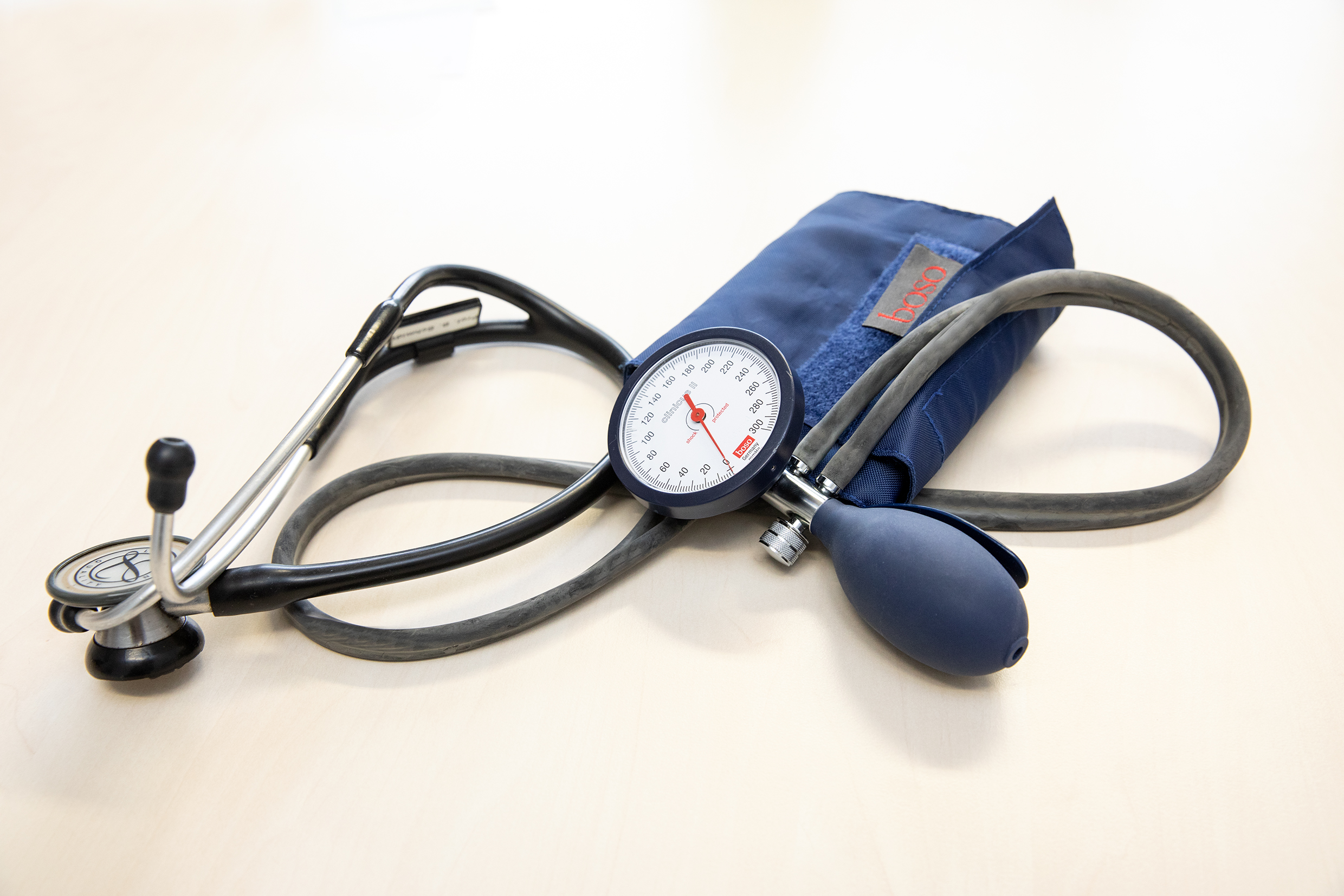MHH researchers present meta-analysis on the treatment of resistant hypertension

The treatment of resistant hypertension is a medical challenge. Professor Dr Bernhard Schmidt and his team have now investigated which therapeutic measures are the most effective in lowering blood pressure in resistant hypertension. Copyright: Karin Kaiser / MHH.
High blood pressure is one of the biggest risk factors for cardiovascular disease. Diseases associated with high blood pressure are the most common cause of death worldwide. Antihypertensive drugs are among the most frequently prescribed medications in Germany. However, there are people whose blood pressure does not fall below the desired target value, even though they are already taking three or more different blood pressure medications. The diagnosis is then called resistant hypertension. It increases the risk of stroke, heart attack and chronic kidney disease, including kidney failure. These patients also have a significantly shorter life expectancy.
The treatment of resistant hypertension is a medical challenge. Various medications are used, as well as interventional, i.e. non-surgical and surgical, procedures. These include so-called renal denervation and the baroreceptor "pacemaker". In renal denervation, the finest nerve tracts in the area of the renal artery are sclerosed via a catheter with the aim of lowering blood pressure. The baroreceptor pacemaker stimulates nerve cells in the area of the carotid artery, which also has an effect on blood pressure regulation.
A team led by Professor Dr Bernhard Schmidt, Senior Physician at the Department of Renal and Hypertensive Diseases at Hannover Medical School (MHH), has now investigated which therapeutic measures are the most effective in lowering blood pressure in resistant hypertension. To do this, the researchers summarised a large number of previously published scientific studies in a network meta-analysis and compared the effectiveness of the various treatment methods. The result: the active ingredient spironolactone, which prevents the hormone aldosterone from working, had the strongest blood pressure-lowering effect. A change in lifestyle also showed a clear positive effect in this severe hypertension. In contrast, the effects of the other medicinal and interventional procedures were less pronounced. The meta-analysis has been published in the journal Cardiovascular Research.
Comparison of the effectiveness of different high blood pressure therapies
Two values are determined when measuring blood pressure. The first is called systole and corresponds to the pressure in the blood vessels when the heart muscle is pumping blood into the body. The second, diastole, indicates the lowest pressure in the vessels when the heart muscle is relaxed. Blood pressure is measured in "millimetres of mercury", abbreviated to mmHg. High blood pressure begins at a value of more than 140/90 mmHg. The risk of heart attack and stroke is reduced by up to 50 per cent if the blood pressure is permanently lowered to below 140/90 mmHg. The ideal value is 120/80 mmHg.
"Resistant hypertension occurs when the blood pressure is above 140/90 despite taking three different classes of antihypertensive medication at maximum tolerated doses," explains Professor Schmidt. In addition to diuretics, the drug classes also include ACE inhibitors, sartans and beta-blockers. For the meta-analysis, the researchers analysed a total of 24 studies that tested different therapies for resistant hypertension. Even though each of these studies individually only examined one blood pressure treatment in comparison to sham therapies (placebo), the special methodology of the network meta-analysis made it possible to compare the different forms of treatment across the various studies. "We were able to see that all therapies had an effect, but to varying degrees," says Professor Schmidt.
Adherence to therapy as a prerequisite for treatment
Adherence to treatment, i.e. the willingness to follow medical instructions, also plays a major role in the treatment of high blood pressure. "Interestingly, the placebo treatments in the studies also had a positive effect, presumably because the patients cooperated better when they felt that they were being looked after by a physician," surmises Professor Schmidt. If the patient does not take the medication or does not take it as prescribed and the blood pressure remains high, this is known in medicine as pseudo-resistant hypertension. "Of course, the physicians treating the patient have to keep an eye on this." However, around ten per cent of people with high blood pressure suffer from actual resistant hypertension. "Here, our studies have shown the surprisingly large influence that lifestyle changes have," the nephrologist states. People who eat a healthy, low-salt diet, get enough exercise, avoid being overweight and reduce their consumption of nicotine and alcohol can do a lot to combat high blood pressure themselves. The greatest blood pressure-lowering effects can be expected in combination with spironolactone.
However, spironolactone also has side effects such as enlargement of the mammary glands in men. It also alters the electrolyte balance in the blood. This can result in increased potassium levels, which have a negative effect on the heart. However, there are already promising studies on similarly effective alternatives that have fewer side effects. "Until these are on the market, spironolactone, which has been tried and tested for years, remains the gold standard in treatment," says Professor Schmidt.
A summary of the original paper “Efficacy of pharmacological and interventional treatment for resistant hypertension – a network meta-analysis“ can be found here.
Text: Kirsten Pötzke